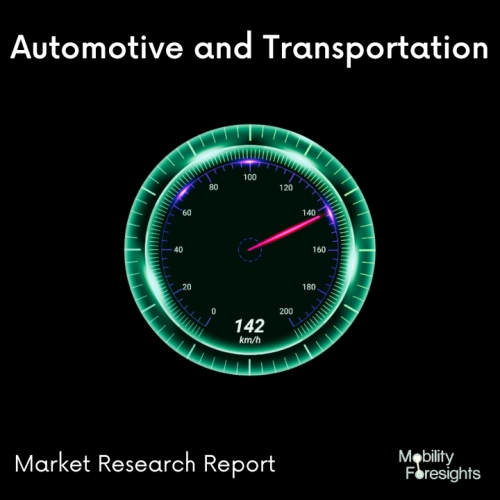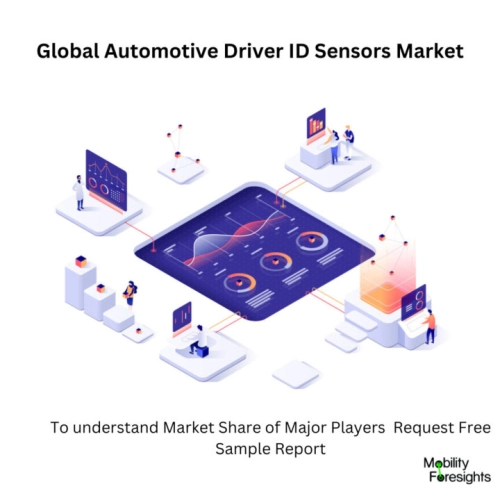
- Get in Touch with Us

Last Updated: Apr 25, 2025 | Study Period: 2023-2030
A new technology in the auto sector called automotive driver ID sensors is intended to recognise a driver's identification when they get into a car. This technology is used to help prevent theft and to help make sure the right person is operating the vehicle. The sensors can identify a driver by analysing the distinctive traits of their fingerprints or facial features.
The technology operates by the installation of sensors within the car. The driver's face or fingerprints are then scanned by these sensors to confirm their identification.
The car will permit the driver to start the engine and go after they have been identified. The system can identify numerous drivers, so if there are several persons in the car, it will be able to determine who is driving and change the settings accordingly.
The use of driver ID sensors in automobiles has many advantages. One benefit is that it confirms who is actually operating the car. As it is considerably more challenging for a burglar to take a car when the identity of the driver is known, this can help lower the risk of theft. The sensors can also increase safety since they can spot distracted or intoxicated drivers.
Automotive driver ID sensors can be used to lower insurance costs in addition to enhancing safety. The insurance provider can ensure that the correct individual is paying for the policy by giving them information about who the motorist is. As a result, the firm can more correctly determine the risk associated with insuring the motorist, which can help lower the cost of premiums.
Overall, automotive driver ID sensors are a great new technology that can help improve safety and reduce insurance costs. By providing a way to easily and accurately identify drivers, this technology can help keep drivers and their vehicles safe.

The Global Automotive driver ID sensors market accounted for $XX Billion in 2022 and is anticipated to reach $XX Billion by 2030, registering a CAGR of XX% from 2023 to 2030.
The Bosch Driver Identification Sensor recognises drivers and automatically adjusts vehicle settings to their preferences. It recognises drivers and activates pre-set settings as soon as they enter the vehicle using facial recognition technology.
Continental Automotive Driver Identification Sensor: This sensor recognises drivers and activates pre-set settings as soon as they enter the vehicle using facial recognition technology. It also adds extra security to ensure that only the driver has access to the vehicle.
Valeo Driver Identification Sensor: This sensor identifies drivers and activates pre-set vehicle settings using advanced facial and voice recognition technology. It is intended to provide users with a safe and seamless driving experience.
| Sl no | Topic |
| 1 | Market Segmentation |
| 2 | Scope of the report |
| 3 | Abbreviations |
| 4 | Research Methodology |
| 5 | Executive Summary |
| 6 | Introduction |
| 7 | Insights from Industry stakeholders |
| 8 | Cost breakdown of Product by sub-components and average profit margin |
| 9 | Disruptive innovation in the Industry |
| 10 | Technology trends in the Industry |
| 11 | Consumer trends in the industry |
| 12 | Recent Production Milestones |
| 13 | Component Manufacturing in US, EU and China |
| 14 | COVID-19 impact on overall market |
| 15 | COVID-19 impact on Production of components |
| 16 | COVID-19 impact on Point of sale |
| 17 | Market Segmentation, Dynamics and Forecast by Geography, 2023-2030 |
| 18 | Market Segmentation, Dynamics and Forecast by Product Type, 2023-2030 |
| 19 | Market Segmentation, Dynamics and Forecast by Application, 2023-2030 |
| 20 | Market Segmentation, Dynamics and Forecast by End use, 2023-2030 |
| 21 | Product installation rate by OEM, 2023 |
| 22 | Incline/Decline in Average B-2-B selling price in past 5 years |
| 23 | Competition from substitute products |
| 24 | Gross margin and average profitability of suppliers |
| 25 | New product development in past 12 months |
| 26 | M&A in past 12 months |
| 27 | Growth strategy of leading players |
| 28 | Market share of vendors, 2023 |
| 29 | Company Profiles |
| 30 | Unmet needs and opportunity for new suppliers |
| 31 | Conclusion |
| 32 | Appendix |